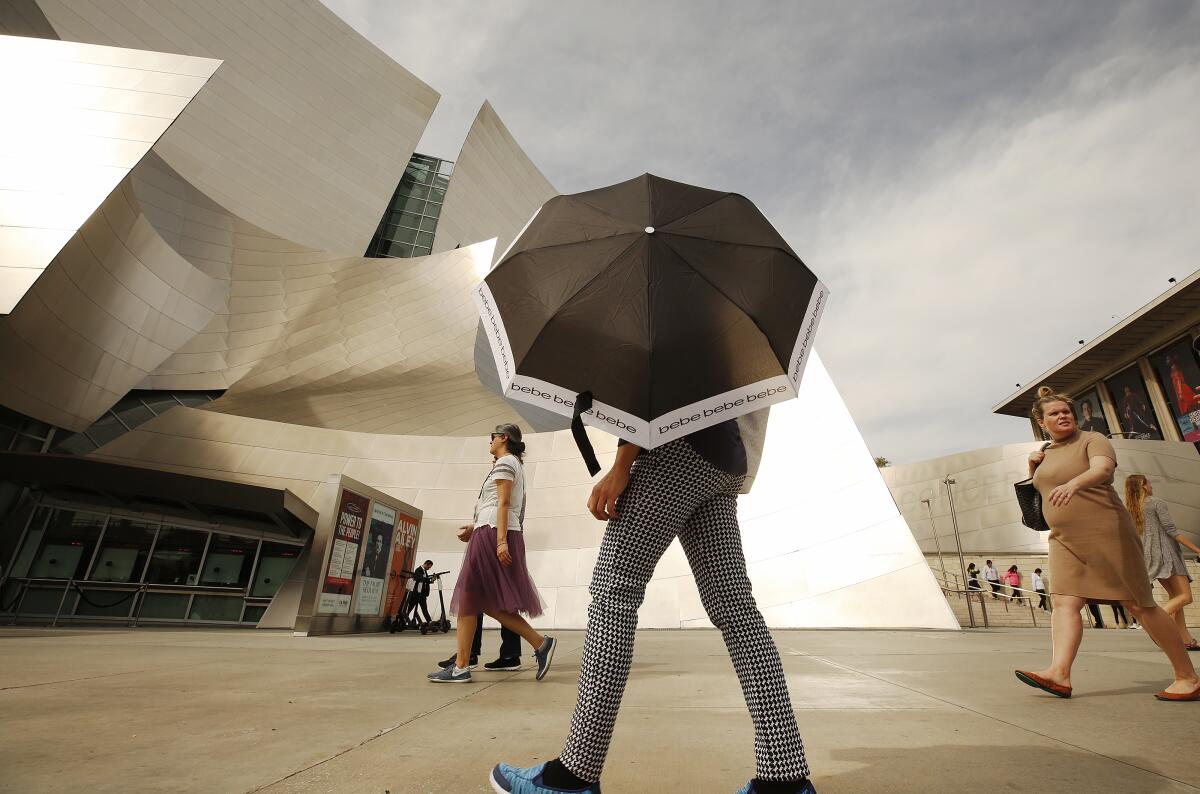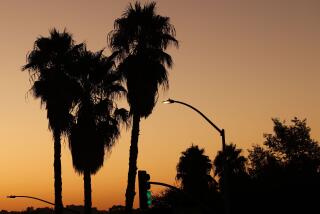Fullerton checks in as hottest place in the U.S.; highs are about to give way to cool-down

- Share via
Record-setting heat will give way to cooler temperatures and the possibility of showers as a storm system moves over the Los Angeles area this weekend, forecasters say.
Temperatures are expected to drop slightly Friday but remain above normal a day after Fullerton checked in with the highest temperature in the U. S. -- 88 degrees. By Saturday, the mercury is expected to drop about 10 degrees — into the low 70s — for much of the Southland.
On Sunday, temperatures are expected to fall further, into the low 60s, and wet weather is expected to return to the area, with a slight chance of rain before 10 a.m. followed by a 30% to 40% chance of showers in the afternoon and evening, said Joe Sirard, a meteorologist with the National Weather Service in Oxnard. The storm is expected to drop less than a quarter-inch of rain across Los Angeles, Ventura and Santa Barbara counties, according to the weather service.
There’s also a slight chance of thunderstorms, which could produce small hail and locally higher rainfall totals. Snow levels are forecast to drop to 3,000 to 4,000 feet, and travel through mountain passes, including Interstate 5 through the Grapevine, may be affected.
The cool-down comes as a low-pressure system moves in and winds shift from offshore to onshore, bringing in cooler air from the ocean, Sirard said.
“Plus the rain helps to cool things down,” he said. “All of that is going to combine to give us these below-normal temperatures coming up on Sunday.”
The whiplash temperatures come after the mercury rose to 85 degrees at Los Angeles International Airport on Thursday, breaking the record of 83 degrees set on the same date in 1992. Long Beach Airport reached 84 degrees, nudging past the record of 83 degrees set in 1992, according to weather service data.
Fullerton recorded a high of 88 degrees, which did not meet or break any records but made the Orange County city the hottest place in the U.S. on Thursday.
The unseasonably warm weather was the result of a high-pressure ridge that has lingered over the eastern Pacific Ocean for much of January and February, rerouting winter storms that typically soak California to the Pacific Northwest.
The lackluster rainfall during what is typically California’s wettest month has caused some consternation among weather experts.
Downtown Los Angeles has received just 0.04 of an inch of rain this month, a sharp contrast to February 2019, when a series of atmospheric rivers hammered the area with rain, dumping 5.59 inches downtown and keeping the mercury below 70 degrees all month.
The lack of rain has also taken its toll on the Sierra Nevada snowpack, a key source of the state’s water supply. As of Thursday, the statewide snowpack measured 46% of average for the time of year. At roughly the same time last year, the snowpack measured 151% of average.
Times staff writer Hannah Fry contributed to this report.
More to Read
Sign up for Essential California
The most important California stories and recommendations in your inbox every morning.
You may occasionally receive promotional content from the Los Angeles Times.











